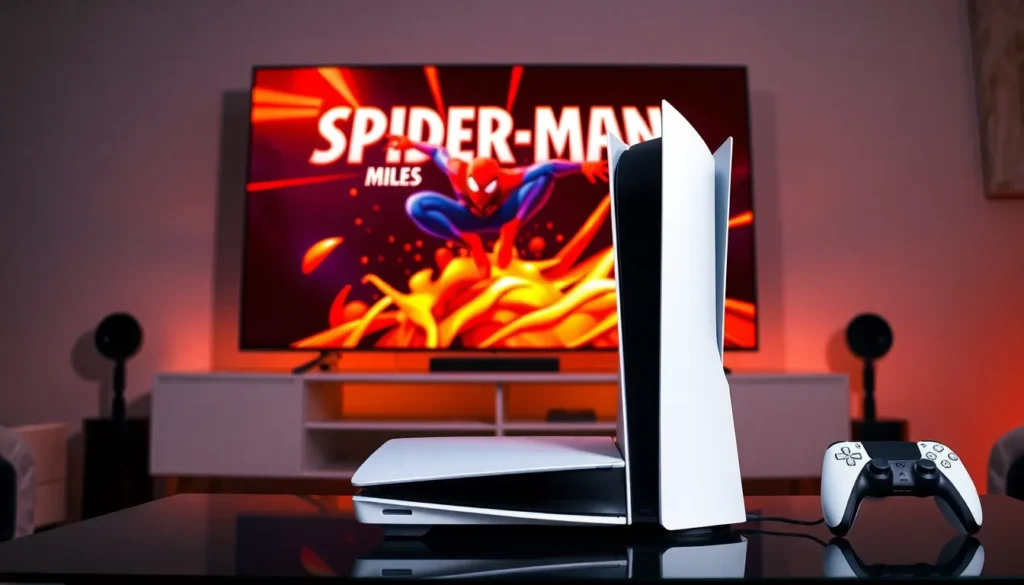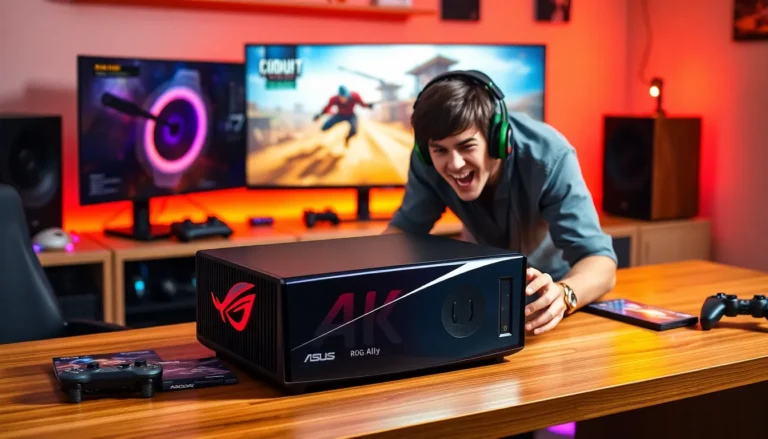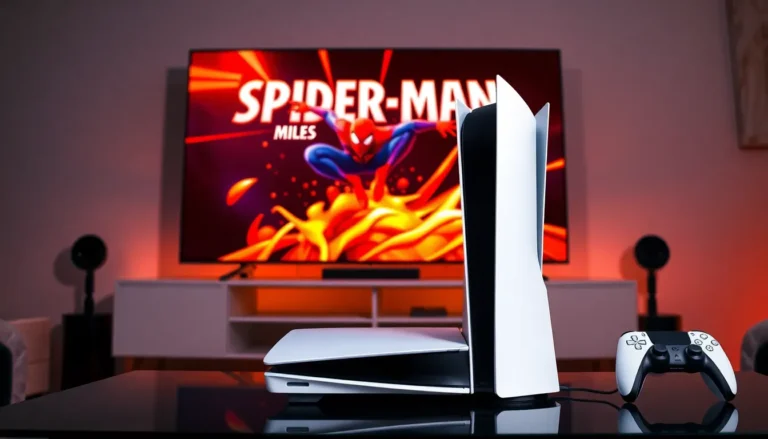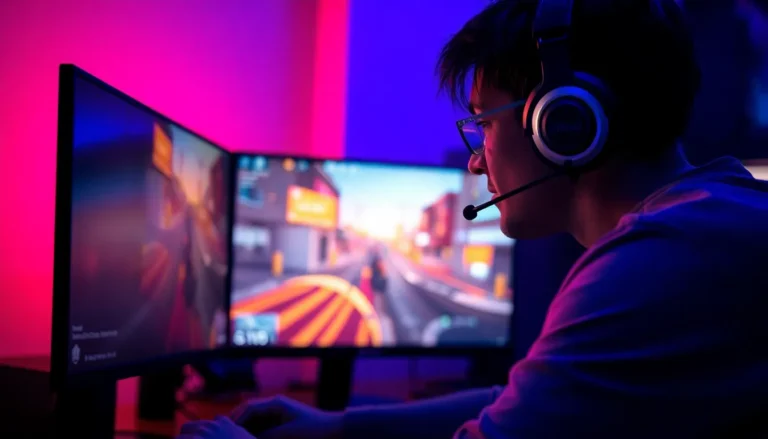When it comes to gaming, frame rates can make or break the experience. The PlayStation 5, Sony’s crown jewel, promises to deliver breathtaking visuals and smooth gameplay, but just how many frames per second can it handle? Buckle up, because this console isn’t just a pretty face; it’s a powerhouse that can leave even the most seasoned gamers grinning from ear to ear.
From heart-pounding action in fast-paced shooters to the serene landscapes of open-world adventures, knowing the FPS capabilities of the PS5 is crucial. It’s not just about the numbers; it’s about immersing oneself in a world where every movement feels fluid and every explosion resonates. So, let’s dive into the nitty-gritty of what FPS the PS5 runs at and why it matters for the ultimate gaming experience.
Table of Contents
ToggleOverview Of PS5 Performance
PS5 delivers exceptional performance, pushing the limits of what gamers expect. This console supports a range of frame rates, enhancing gameplay across various titles. Titles like “Spider-Man: Miles Morales” run at 60 FPS, demonstrating the console’s capability to maintain smooth graphics and responsiveness. Compelling experiences in games also emerge through 120 FPS support in select titles, elevating competitive gameplay.
Resolution impacts frame rates significantly. While many games prioritize 4K resolution at 30 FPS, performance modes often enable 60 FPS at lower resolutions. Efficient processing via the custom SSD allows for rapid loading times, further improving overall user experience. Developers often target 60 FPS as a standard, allowing for smoother action during intense gameplay scenarios.
In multiplayer environments, the 120 FPS feature provides a competitive edge, creating an immersive experience when gameplay relies on split-second reactions. Some games achieve performance boosts by unlocking frame rates from their original settings. Experimentation by developers often leads to patches that refine frame rates based on player feedback.
Visual fidelity also benefits from advanced features like ray tracing, which can impact frame rates. When enabled, ray tracing typically runs at 30 FPS; however, some titles manage to balance both effects and higher frame rates through performance optimizations. PS5’s advanced technology showcases how frame rates play a vital role in shaping the gaming landscape.
Thus, understanding PS5’s performance metrics helps gamers choose their preferred settings while unlocking the true potential of their gaming experience.
Common FPS Ranges For PS5 Games
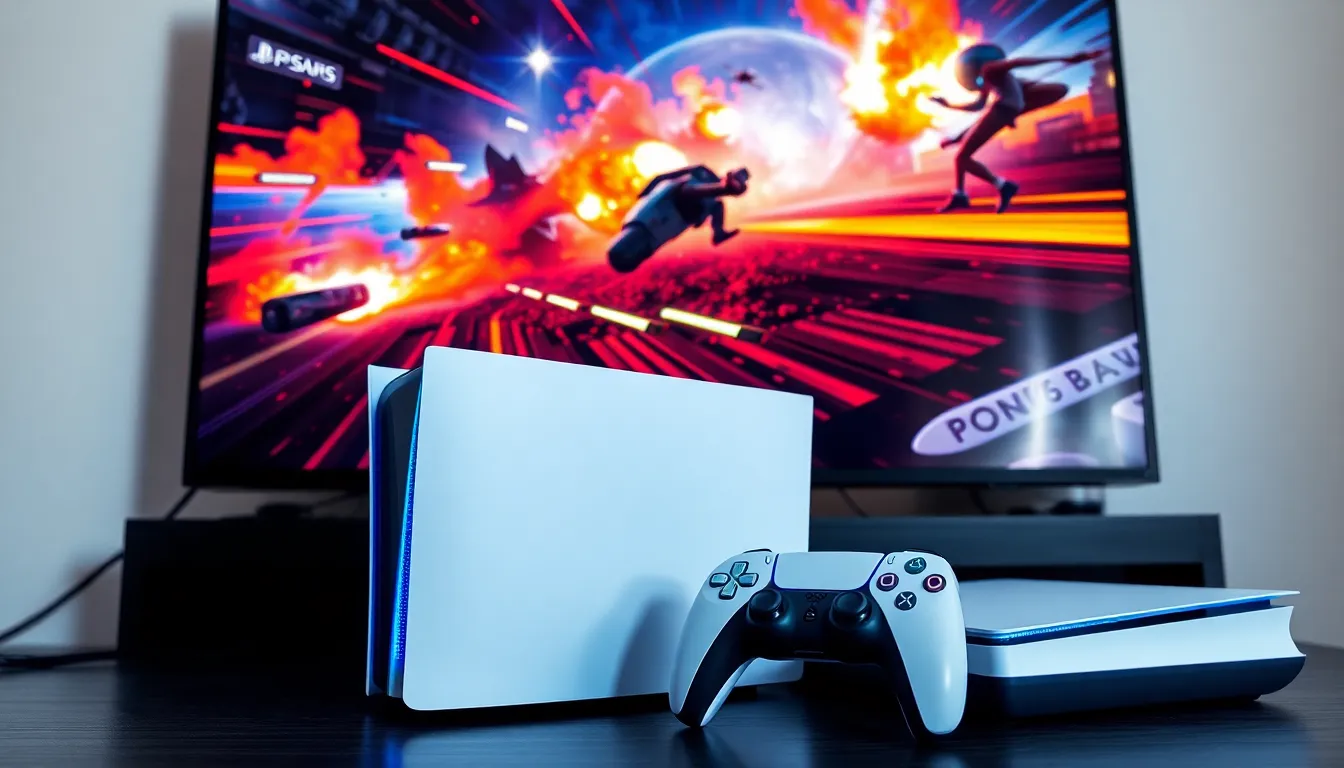
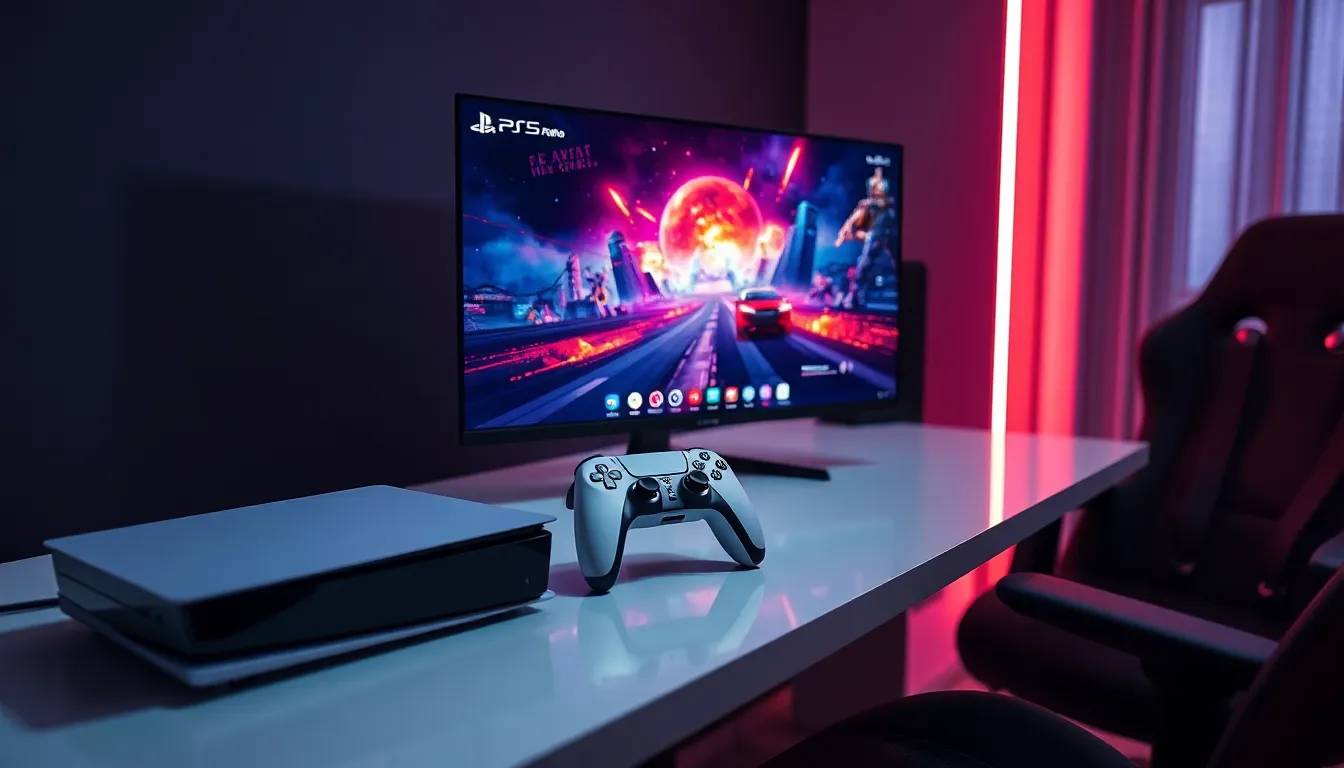
Understanding frame rate ranges is crucial for PS5 games. The console delivers impressive performance, allowing titles to reach various FPS, enhancing gameplay and visuals.
Launch Titles
Launch titles set the standard for FPS performance on PS5. Games like “Demon’s Souls” and “Spider-Man: Miles Morales” frequently run at 60 FPS, providing smooth gameplay. “Astro’s Playroom,” another launch title, showcases the console’s capabilities with 60 FPS as well. These initial offerings highlight the potential of the PS5 to maintain consistent frame rates while delivering stunning graphics. Developers crafted these experiences to utilize the power of the new hardware, ensuring players enjoyed vibrant visuals without sacrificing performance.
Recent Releases
Recent game releases continue to demonstrate the PS5’s impressive frame rate capabilities. Titles such as “Ratchet & Clank: Rift Apart” and “Returnal” often hit 60 FPS, creating fluid motion and seamless action. Some games support performance modes that allow users to prioritize FPS over resolution, maximizing responsiveness. Competitive multiplayer titles, including “Call of Duty: Vanguard,” can achieve 120 FPS, granting players a significant edge in fast-paced arenas. Developers are increasingly optimizing games for the PS5, focusing on delivering an immersive experience through stable and high frame rates across genres.
Factors Influencing FPS On PS5
Frame rates on the PS5 depend on several critical factors, including game design and resolution settings. These elements significantly influence the overall gaming experience.
Game Design and Optimization
Game design plays a vital role in determining the FPS on PS5. Developers prioritize frame rate stability through optimization techniques that enhance performance. Detailed graphics can increase the processing load, potentially lowering FPS. Many games, including “Spider-Man: Miles Morales,” balance visual fidelity with smooth gameplay, achieving 60 FPS. Multiplayer titles often receive patches to unlock frame rates, allowing for competitive advantages. Some games utilize dynamic resolution scaling, adjusting the resolution while maintaining frame rates. Performance mode options give gamers choices, with many titles able to run at higher FPS when visual settings are lowered.
Resolution Settings
Resolution settings directly impact FPS on the PS5. Many games run at 4K resolution at 30 FPS, prioritizing visual quality. Performance modes frequently allow a switch to 60 FPS, often targeting lower resolutions. The PS5 supports a variety of resolutions, letting developers tailor performance for different gameplay styles. Competitive titles may emphasize frame rate over resolution to ensure smooth, responsive action. Players looking for optimal performance often benefit from adjusting these settings based on their priorities, balancing resolution and FPS for the best experience.
Comparison With Other Consoles
The PlayStation 5 (PS5) stands out in the gaming landscape when comparing frame rates with other consoles. Firstly, the Xbox Series X also targets high frame rates, regularly achieving 60 FPS in many titles. In competitive scenarios, both consoles shine, with PS5 games like “Call of Duty: Vanguard” reaching up to 120 FPS, similar to the Xbox’s performance in select games.
Notably, the Nintendo Switch operates differently. Most games on the Switch prioritize portability and battery life, resulting in lower frame rates, typically around 30 FPS for titles like “The Legend of Zelda: Breath of the Wild” and “Super Mario Odyssey.” Despite its lower FPS, the Switch offers a unique experience that focuses on gameplay and accessibility.
Game performance varies significantly among platforms. Xbox Series S targets 1440p at 60 FPS, showcasing its position as a budget-friendly alternative. PS5 games frequently capitalize on full 4K at 30 FPS or performance modes for 60 FPS, thus providing a sharper visual experience for gamers.
Optimization techniques also differ among developers. Many games on the PS5 leverage its SSD to deliver faster load times and smoother frame rates, enhancing overall gameplay experiences. Conversely, the Xbox Series X excels with its robust hardware, often delivering higher resolutions while maintaining competitive frame rates.
Furthermore, upcoming titles may push boundaries. Developers are increasingly focused on maximizing console potential to achieve impressive performance. Players’ choices in settings could influence gameplay, allowing for resolution adjustments that prioritize frame rate or visual fidelity. This adaptability emphasizes the PS5’s capabilities while comparing it with its competitors in the console market.

